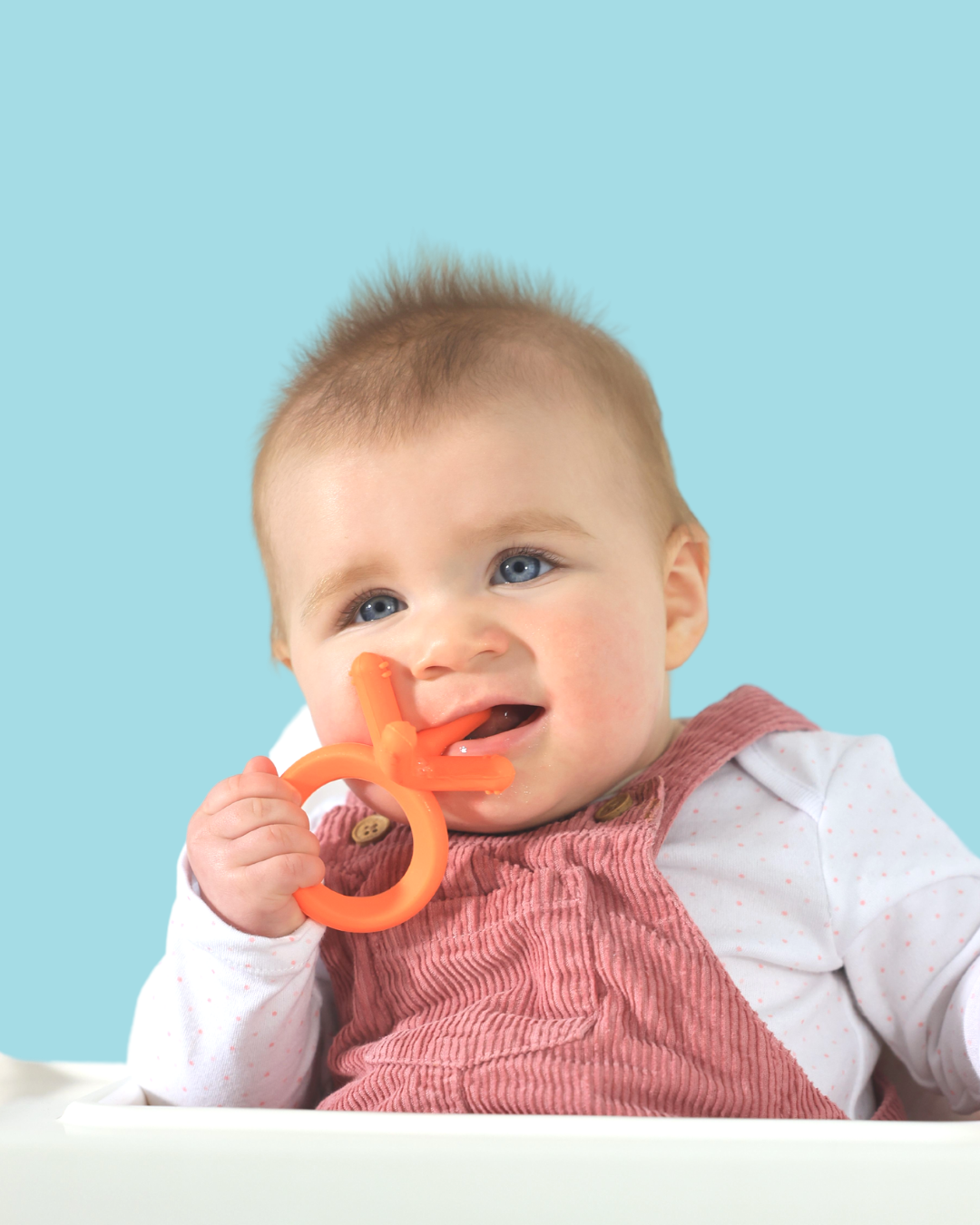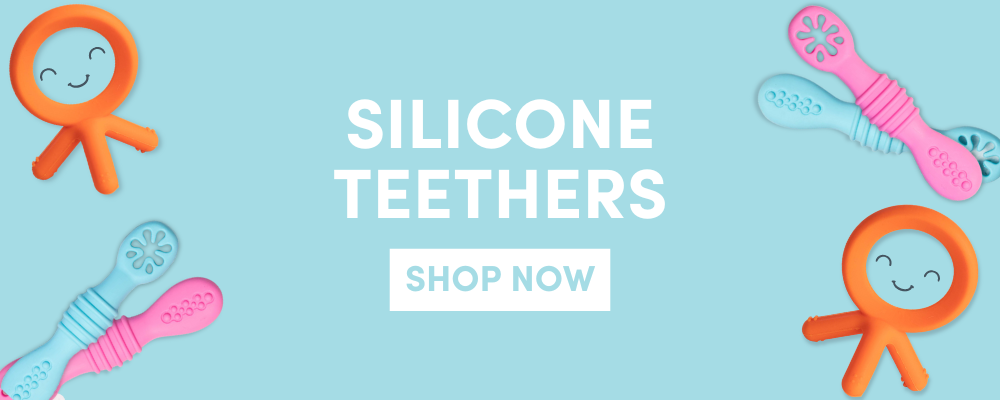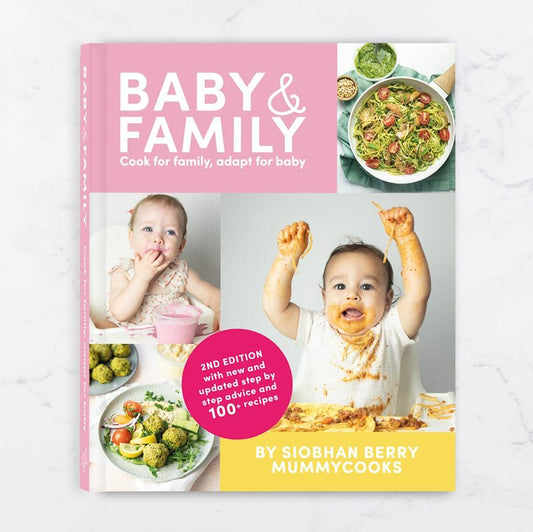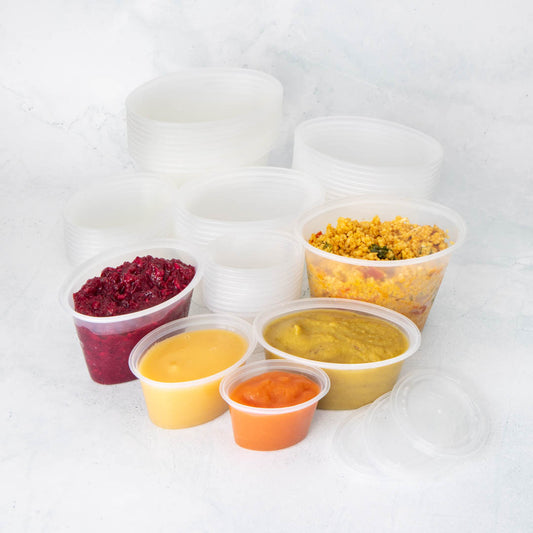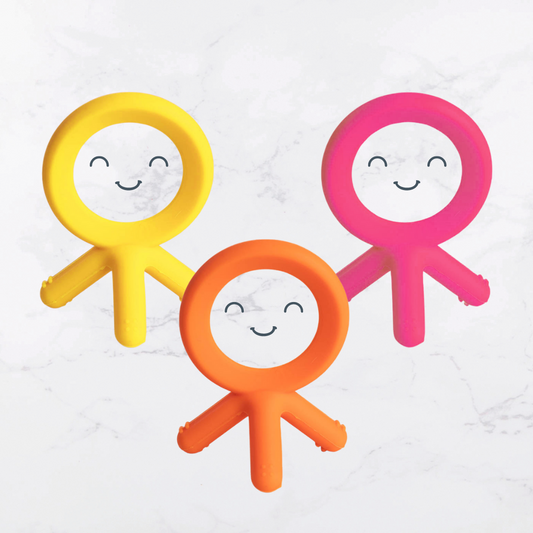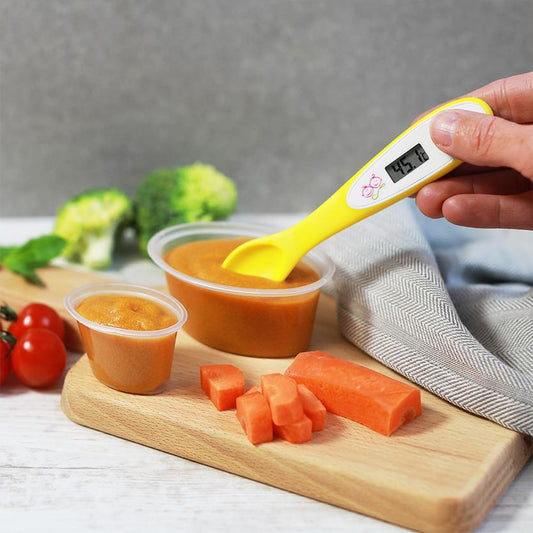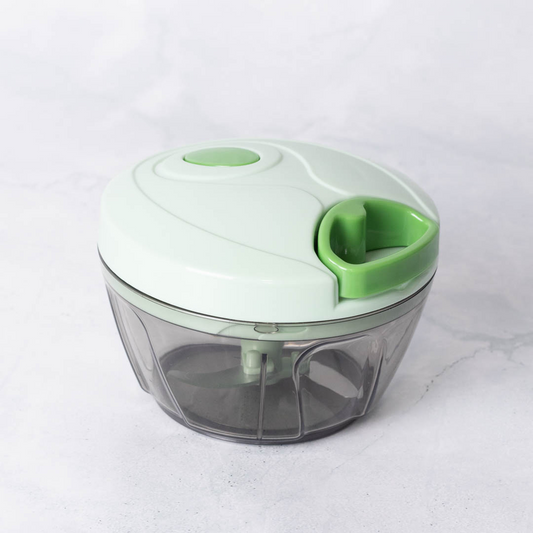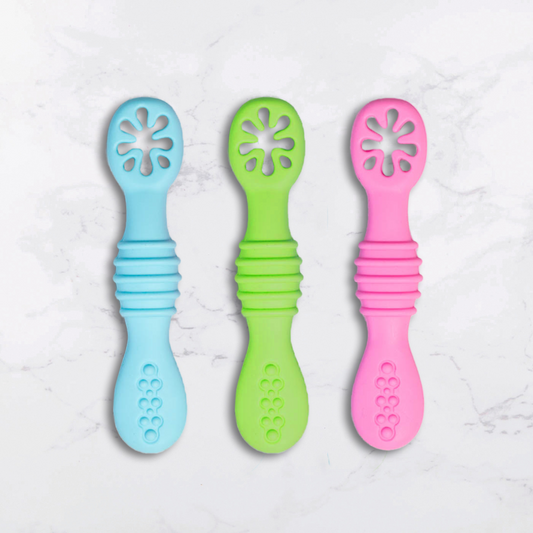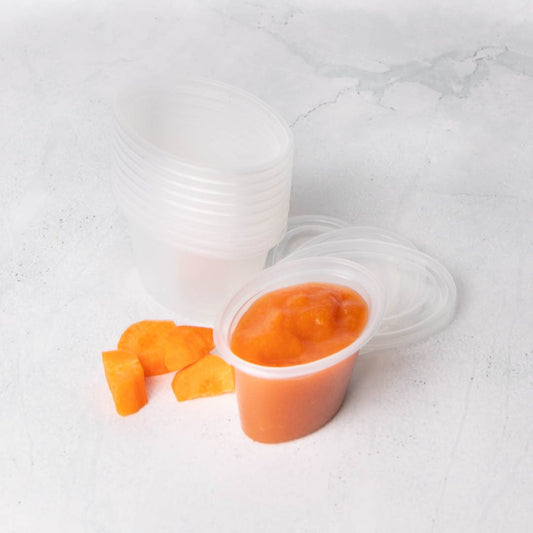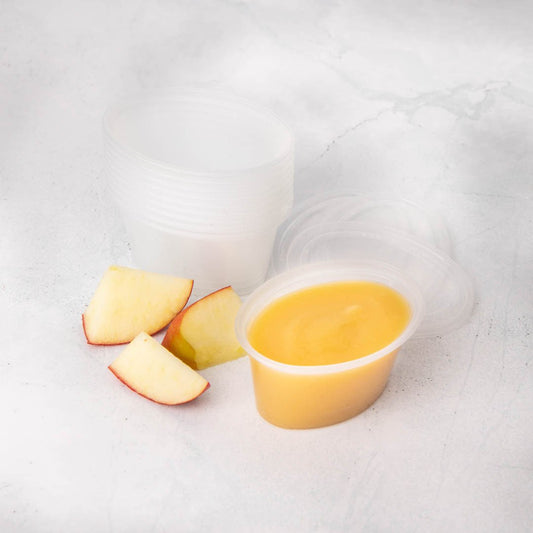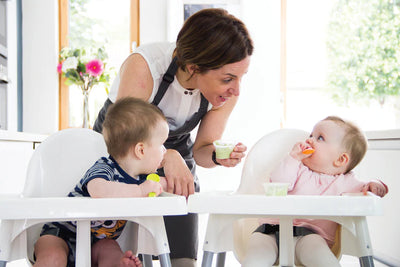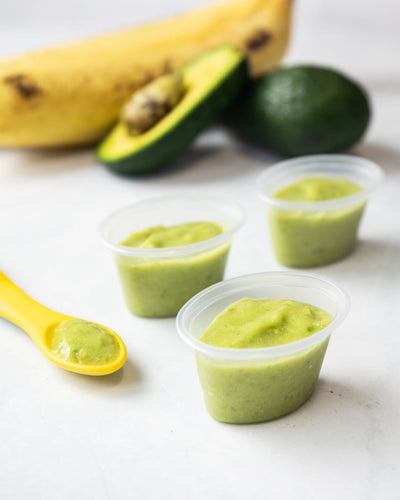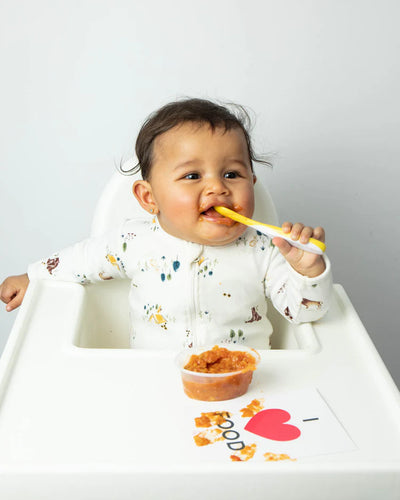The first months of your baby’s life can be quick, confusing and overwhelming, but ultimately it is such an exciting time watching your baby grow! From breastfeeding to teething phases and feeding cues, there is a lot that changes during a newborn's development stages. As your baby reaches each developmental milestone it’s possible to introduce teethers as early as 3 months to develop your baby’s chewing skills. Check out this blog on teaching your baby to chew.
The First Month - Getting to Know Each Other
During the first month, your baby will be attracted to light. You may often find them staring at a sunny window or lamp. If you place your face or a bright toy about 20cm in front of their face, they will focus on it and be able to follow the slow in and out and left and right movements with their eyes. At this age, your child will find it easiest to see high-contrast black and white toys.
To begin forming a connection with your baby, hold them close to your face, support their rocking head and neck, tell them stories, ask them questions, or sing them songs. The gentle back and forth of your "talk" cements your baby's trust, as it shows that you are interested in them and they can count on you to respond. Mimicking these sounds will encourage them to make more cooing and gurgling sounds. Their hearing is not yet fully developed but still, your child already knows your voice and other sounds that are often heard in the womb.
The Second Month - Starting to Grow
Your baby will now gradually lose their "grasping reflex", so instead of instinctively grabbing your fingers or objects all the time, they will grab and release objects more purposefully. You may now notice that your baby's cry differs from hunger, tiredness, boredom, agitation, discomfort, or pain. Crying should also subside as your child becomes better at expressing themselves.
They will also be able to vocalize in other ways at this point, such as cooing, clucking, and buzzing. Crying, cooing, and other sounds are critical to language development as your baby learns to control the lungs, vocal cords, and muscles they use to speak.
Your baby is starting to grow fast! After two months, they grow about 2 pounds and 1½-2 inches long each month. They are no longer tiny babies. Their face may look a little round, and their arms and legs may start to roll a little.
The Third Month - Developing Strength
When on their tummy, your baby may be able to push up their head and shoulders, leaning on their arms. Your baby will have also lost their "grab" and "step" reflexes because at rest their hands are loosely open. Your baby will sag at the knees if you hold them in a ‘standing’ position with their feet on a hard surface as they haven’t developed the muscles to stand up on their own yet.
Your baby can hold a simple toy but still needs to develop hand-eye coordination. They may be able to hold objects for longer periods and may start shaking them. Their vision has developed to be visually very alert, especially when staring at nearby faces and adults. They can focus on a dangling toy about 20cm in front of them and follow it in half a circle from side to side.
At this stage introducing a teething toy to your baby will allow them to learn about holding utensils. They will also start to develop their hand-eye coordination they need to bring it to their mouth. Check out our Teethers.

The Fourth Month - Teething Cues
In the fourth month, you may start to see the first signs of teething, such as drooling, sore and red gums, red cheeks. It may be another month or so before you see that important first tooth, so getting a teether is very important for this month! A teether will help with soothing sore gums thus reducing fussiness and related sleep issues. I would recommend a Quadopus teether.
At this age, your baby will probably want to chew on anything they can get their hands on. Having a teether is also a safe way to let your baby experiment with putting objects in their mouth. Our teethers are safe for baby - they’re made from food-grade silicone and are BPA Free, Phthalate Free and Plastic Free.
Your baby’s eye muscles should be stronger now so they can focus properly versus squinting like they would have when younger. Your child will smile naturally, especially around people, as well as be emotionally responsive, cute, and enjoy playing with you (they may cry when the game stops). It is now easy to tell if they are happy or sad. There will be a lot of babbling and experimenting with different sounds, and your baby will happily imitate your movements, facial expressions, and sounds.
The Fifth Month - Developing Senses
Your baby can now lift and hold an object, but not yet release it. They can also use their thumbs separately from their fingers, allowing them to hold objects more precisely in a "claw-like" grasp. They especially like toys that make a lot of noise when shaken. Your little one will have also gained manual dexterity and can now pass a toy from one hand to the other and pick up small objects.
Your baby's hearing and vision are now almost fully developed. Their eye movement control and eye-body coordination continue to improve, and most 5-month-olds have good three-dimensional vision with a sense of depth and distance. They will most likely also have a good colour vision now, ranging from bold brights to light ones.
Five months is a good time to get prepared for the weaning stages. Check out our weaning checklist here and get prepared by reading our blog on ‘How to Start Weaning’. Make the most of your baby’s interest in playing games and new objects - introduce them to everyday weaning items like their suction bowl, spoons and pots. Let them feel them, play with them and enjoy a positive experience with them. Note: our Silicone Teething Spoons also double as a training spoon to help your baby develop self-feeding skills.
The Sixth Month - Movement Improvement
At six months, your baby should have been offered their first foods.. At this stage, your baby should have developed an understanding of what object permanence is. Object permanence is where they will look for an object that they have dropped or that has fallen out of sight. When passing objects back and forth from one hand to the other, they have improved and the movement is smooth and fluid.
When it comes to the movement of your baby, it can still be a little wobbly, sitting up on their own for a minute or so, but now they can also hold their head up by themselves. Their tongue thrust will have moved from the front of the tongue to the middle of the tongue at this stage of your baby’s development too.
Our Weaning Advice page provides information and advice on weaning your baby. It includes recipes, tips, and articles on a variety of topics related to weaning, such as introducing finger food, adding herbs and spices to baby food, and healthy snacks for your baby, and lots more

